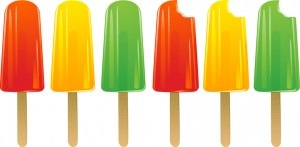 It starts with watching this video:
It starts with watching this video:
23 and 1/2 hours: What is the single best thing we can do for our health? DocMikeEvans
If you are receiving this post via email you might have to view it online. Click here.
 It starts with watching this video:
It starts with watching this video:
23 and 1/2 hours: What is the single best thing we can do for our health? DocMikeEvans
If you are receiving this post via email you might have to view it online. Click here.
 Are your pants feeling a bit tight and you can’t figure out why?
Are your pants feeling a bit tight and you can’t figure out why?
It’s those mindless bites that will get you. Each one of those “shove it in your mouth without thinking about it” bites is worth about 25 calories. Do the math. If you have four mindless bites a day above and beyond your daily calorie needs that means possibly gaining slightly less than a pound a month (it takes 3500 calories to gain a pound — and yes, you need a deficit of 3500 calories to lose a pound).
Ouch! Each bite adds up to — on average — 25 calories (sometimes more, sometimes less).
Be aware of what you’re eating – especially when you’re not really eating. Most of us don’t have a clue how many calories – or even bites – we’ve shoved into our mouths at times other than meals. Unfortunately, all of those calories that we eat when we’re not eating meals not only count but add up to those pounds gained — and you can’t figure out why you gained them.
Keep track of when and where you’re most likely to indulge in the mindless bites you shove down the hatch while you’re walking, talking, socializing, working, and driving.
The most effective method is to try to write down what you eat. That may be a pain but might serve as a real “heads-up” because a written record is hard to deny. If you don’t want to write it down (I must admit I have trouble doing that) at least be aware of your mindless bites – and decide if you want to eliminate, control, or include them in your daily calories.
Awareness is a good thing — especially if it makes your jeans fit better.
 For many of us New Year’s Day means football and New Year’s resolutions. We declare that we’re going to do or not do something – usually having to do with lifestyle changes like losing weight, exercising more, eating better, or drinking less. Heard that before?
For many of us New Year’s Day means football and New Year’s resolutions. We declare that we’re going to do or not do something – usually having to do with lifestyle changes like losing weight, exercising more, eating better, or drinking less. Heard that before?
Have you ever seen the hang-dog look on the face of an athlete in a goal scoring drought — or the look on a goalie’s face when that blasted ball or puck lands in the net?
We often set broad – huge – resolutions and goals that are virtually impossible to accomplish (like losing thirty pounds by the end of next week) and end up making you feel awful when you don’t achieve them. You’ve basically set yourself up for failure and most likely you’ll be sporting that hang-dog look, too.
 The earliest recorded celebration of the arrival of the new year dates back 4,000 years ago in ancient Babylon. The first new moon following the vernal equinox, or the day in the spring with an equal amount of sunlight and darkness, signaled the start of a new year.
The earliest recorded celebration of the arrival of the new year dates back 4,000 years ago in ancient Babylon. The first new moon following the vernal equinox, or the day in the spring with an equal amount of sunlight and darkness, signaled the start of a new year.
Today, New Year’s Day–the first day of the calendar year–is celebrated in almost every country in the world, but depending the type of calendar, not all countries or cultures welcome the New Year on January 1st. The Chinese, Egyptian, Jewish, Roman, and Mohammedan years all have different start dates.
January 1 was recognized as New Years Day in the 1500’s with the introduction of the Gregorian Calendar. In 1582 most Catholic countries adopted the Gregorian calendar but the British didn’t adopt it until 1752. Until then the British Empire and their American colonies celebrated the new year in March.
If you have big plans for New Year’s Eve, enjoy yourself by devising an eating strategy before you go out and committing to carrying it out. If you’re watching your weight, have a plan – you can still enjoy yourself and not feel deprived. With a plan you design just for you, you’ll have a much better chance at succeeding – and not end up hating yourself and cursing the scale on the first day of the New Year. Here are some ideas:
If you go to a New Year’s party and have:
you would have consumed 27030 calories and you would need to walk 27.03 miles, or 54060 steps (assuming you cover one mile in 2,000 steps) to burn off those calories.
 Clement Clarke Moore, an Episcopal minister, is largely responsible for the image of Santa Claus as a “right jolly old elf” with a portly figure and the supernatural ability to ascend a chimney with a mere nod of his head. In 1822 he wrote a long Christmas poem called “An Account of a Visit from St. Nicholas, ” commonly called ‘Twas the Night Before Christmas, which helped popularize the image of Santa Claus flying from house to house in “a miniature sleigh” led by eight flying reindeer (the legendary Rudolph with his glowing red nose didn’t make his first appearance until 1939).
Clement Clarke Moore, an Episcopal minister, is largely responsible for the image of Santa Claus as a “right jolly old elf” with a portly figure and the supernatural ability to ascend a chimney with a mere nod of his head. In 1822 he wrote a long Christmas poem called “An Account of a Visit from St. Nicholas, ” commonly called ‘Twas the Night Before Christmas, which helped popularize the image of Santa Claus flying from house to house in “a miniature sleigh” led by eight flying reindeer (the legendary Rudolph with his glowing red nose didn’t make his first appearance until 1939).
In 1881 political cartoonist Thomas Nast used Moore’s poem to create our modern image of Santa Claus showing Santa as a rotund, cheerful man with a full, white beard, holding a sack filled with children’s toys. Nast gave Santa his bright red suit trimmed with white fur, the North Pole workshop, elves, and Mrs. Claus.
Even Santa has weight challenges – and most certainly he has a lot of carb and calorie temptation with all of the cookies and milk left out for him! He uses a sleigh pulled by reindeer that lands him on the roof – so he doesn’t get much exercise just sliding down the chimney (tough with that belly and bag of presents. Should Santa change to walking for transport and eat healthier throughout Christmas Eve?
On Christmas Eve, Santa visits an estimated 92 million households. Walking.about.com figures that if all households were evenly distributed across the earth, Santa would travel 0.78 miles between houses, or 71,760,000 (71.8 million) miles.
Guessing Santa’s weight at 250 pounds and that he’s a walking pretty fast walker – he has to be to get his deliveries done in one night – walking.about.com’s calorie counter estimates that he would burn 13 billion calories.
Two small cookies and a cup of skim milk (giving households the benefit of doubt about full fat dairy) clock in at about 200 calories. If Santa snacks at each of the 92 million households, that works out to a payday of 18.4 billion calories.
So, Santa would gain 1,529,350 pounds every Christmas Eve — even if he walked instead of rode in his sleigh. Walking, he’d have to circle the Earth 1,183 times to burn off the extras.
Maybe Santa is a modern weight conscious man. If he had a cup of carrot and celery sticks at each house rather than cookies and milk, he would have just 50 calories at each house which would add up to 4.6 billion calories. Since he would burn off 13 billion calories by walking, he’d actually lose all of his weight and disappear. Maybe the best idea for him would be a nice combination of veggies at most households and cookies or skim milk every few households to keep him in caloric balance.
 How Not to Get Fat Over The Holidays: Halloween – Thanksgiving – Hanukkah – Christmas – Kwanzaa – New Year’s – Valentine’s Day
How Not to Get Fat Over The Holidays: Halloween – Thanksgiving – Hanukkah – Christmas – Kwanzaa – New Year’s – Valentine’s Day